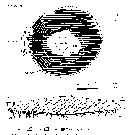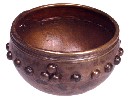Glastonbury Lake Village
Glastonbury Lake Village, SomersetIn 1892 Arthur Bulleid, an amateur antiquary from Glastonbury, discovered the best preserved prehistoric settlement ever found in the UK about a mile and a half north of Glastonbury. He excavated the �lake village� with Harold St George Gray until 1907 uncovering incredibly preserved roundhouses and a wealth of everyday objects of the late Iron Age including wooden remains of wheels, ladders, bentwood boxes, baskets, turned bowls and stave built buckets that had been preserved in the waterlogged peat. Large quantities of bone, metal and pottery artefacts were also recovered.
The settlement was built around 250 BC on a patch of wet woodland surround by a mosaic of open water, reedswamp and sedge fen. Around 40 roundhouses, 5 to 8m in diameter, were erected with probably no more than 14 occupied at any one time. In addition to the normal remains of domesticated animals, the bones of a wide diversity of fish, birds and mammals were recorded including pelicans, sea eagles, puffins, eels and foxes. The location may have been chosen for defensive reasons (several skulls with sword cuts were found) or because it was beside an important trade route along the River Brue flowing north into the Axe valley which was then an arm of the Severn Estuary.
The excavations have been published by Bulleid and Gray (link to bibliography) and reinterpreted by Coles and Minnitt. An exhibition about the site can be seen at the Tribunal Museum in Glastonbury. There is no public access to the site itself, that is owned by the Glastonbury Antiquarian Society.



